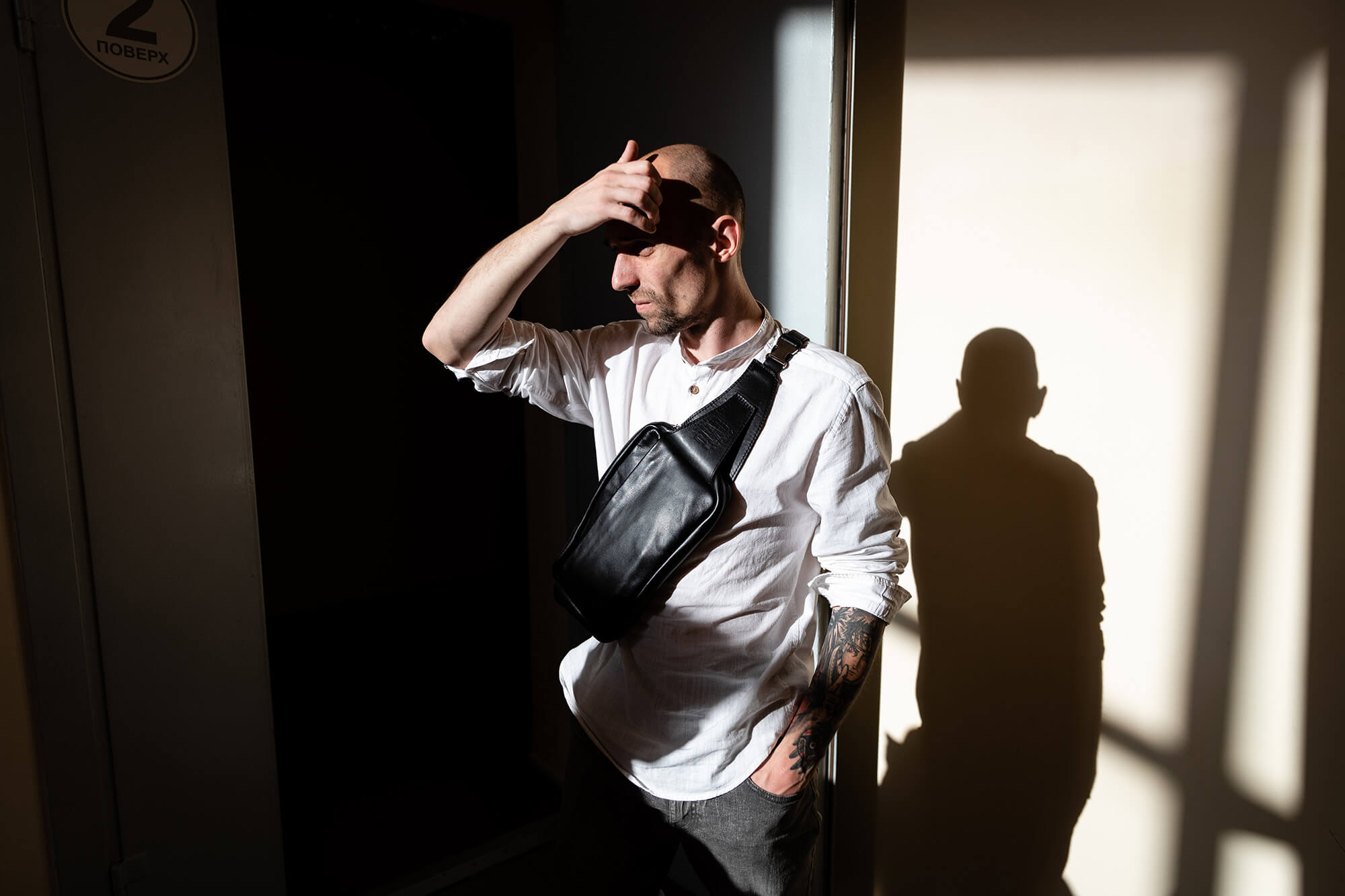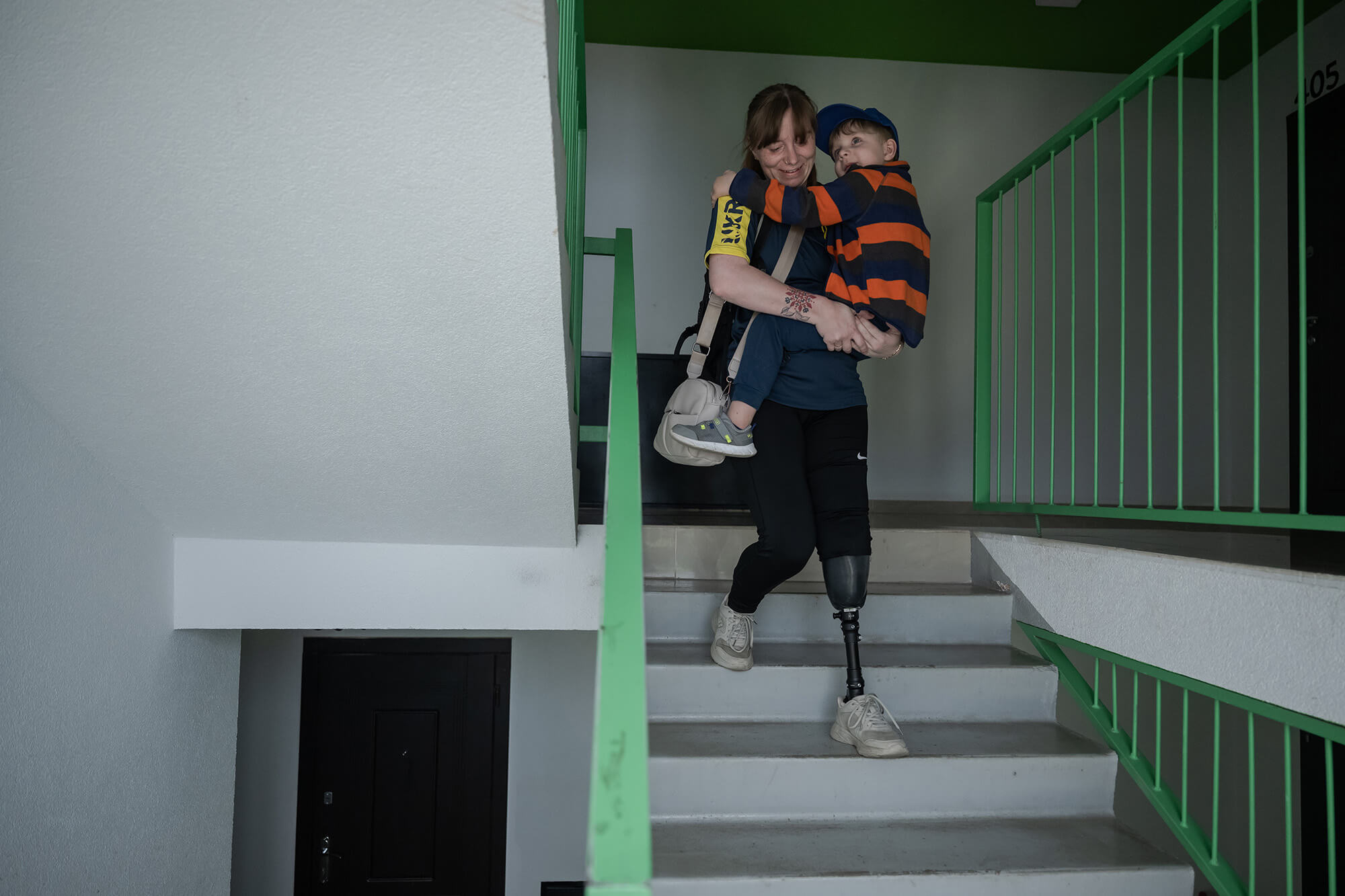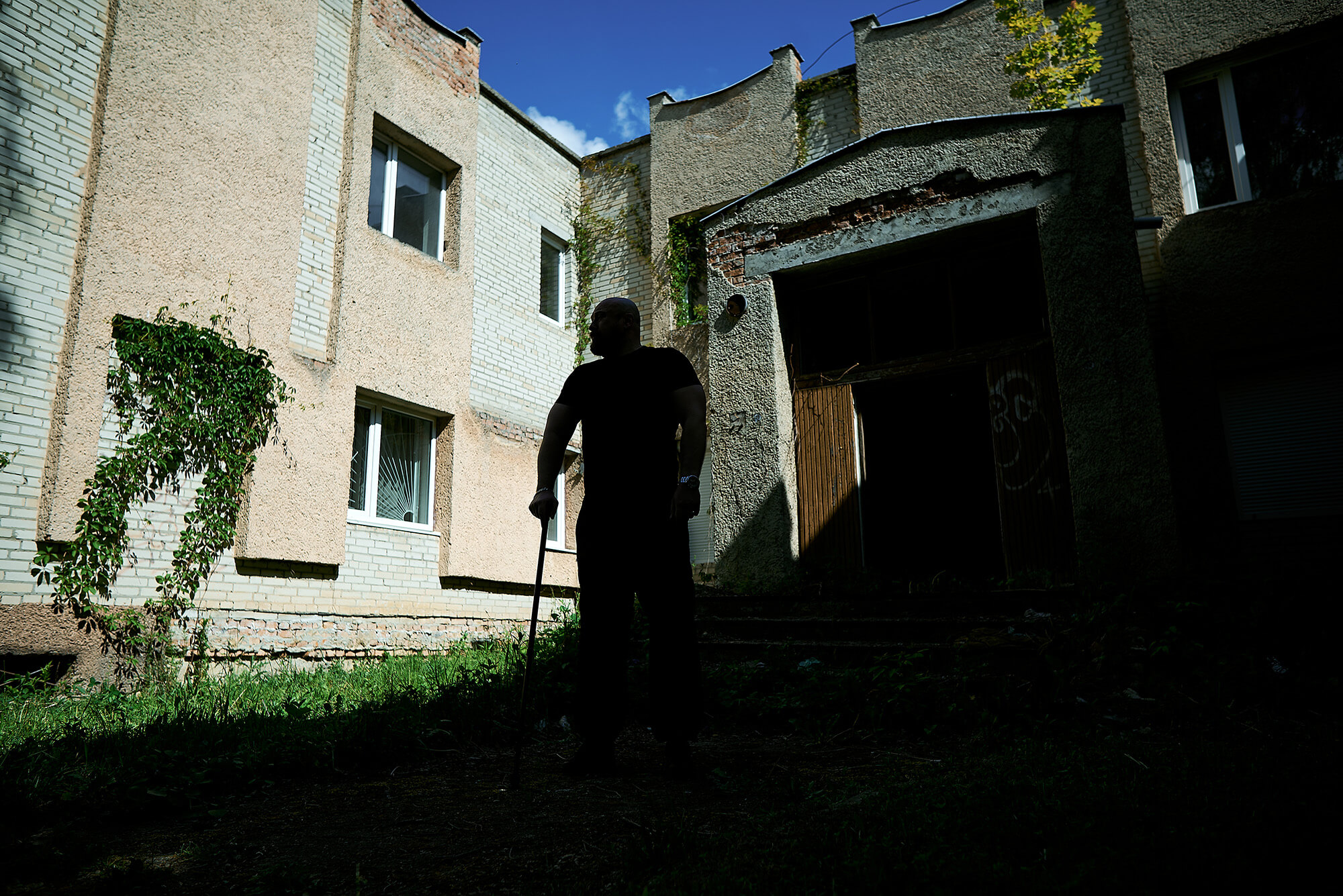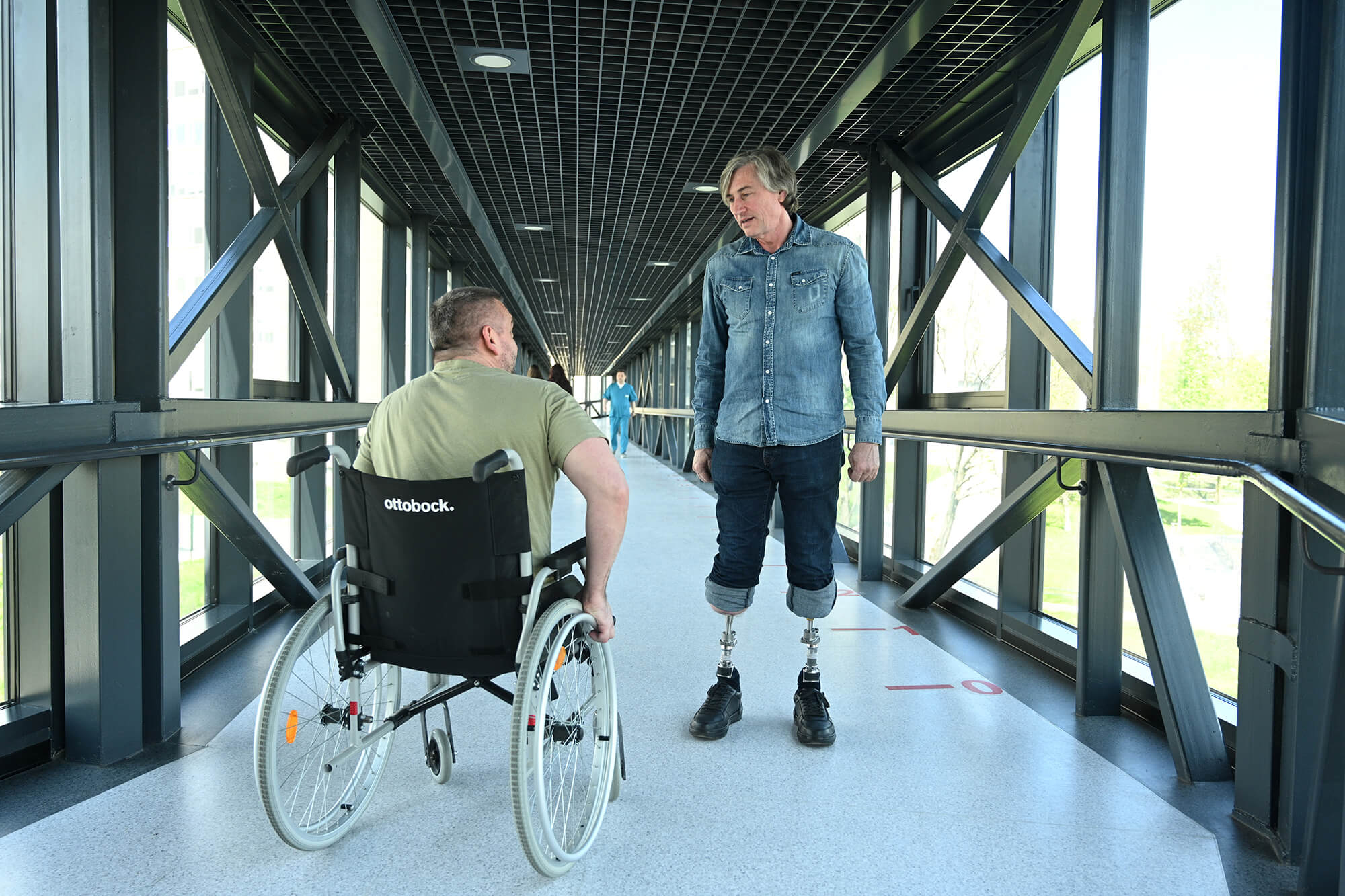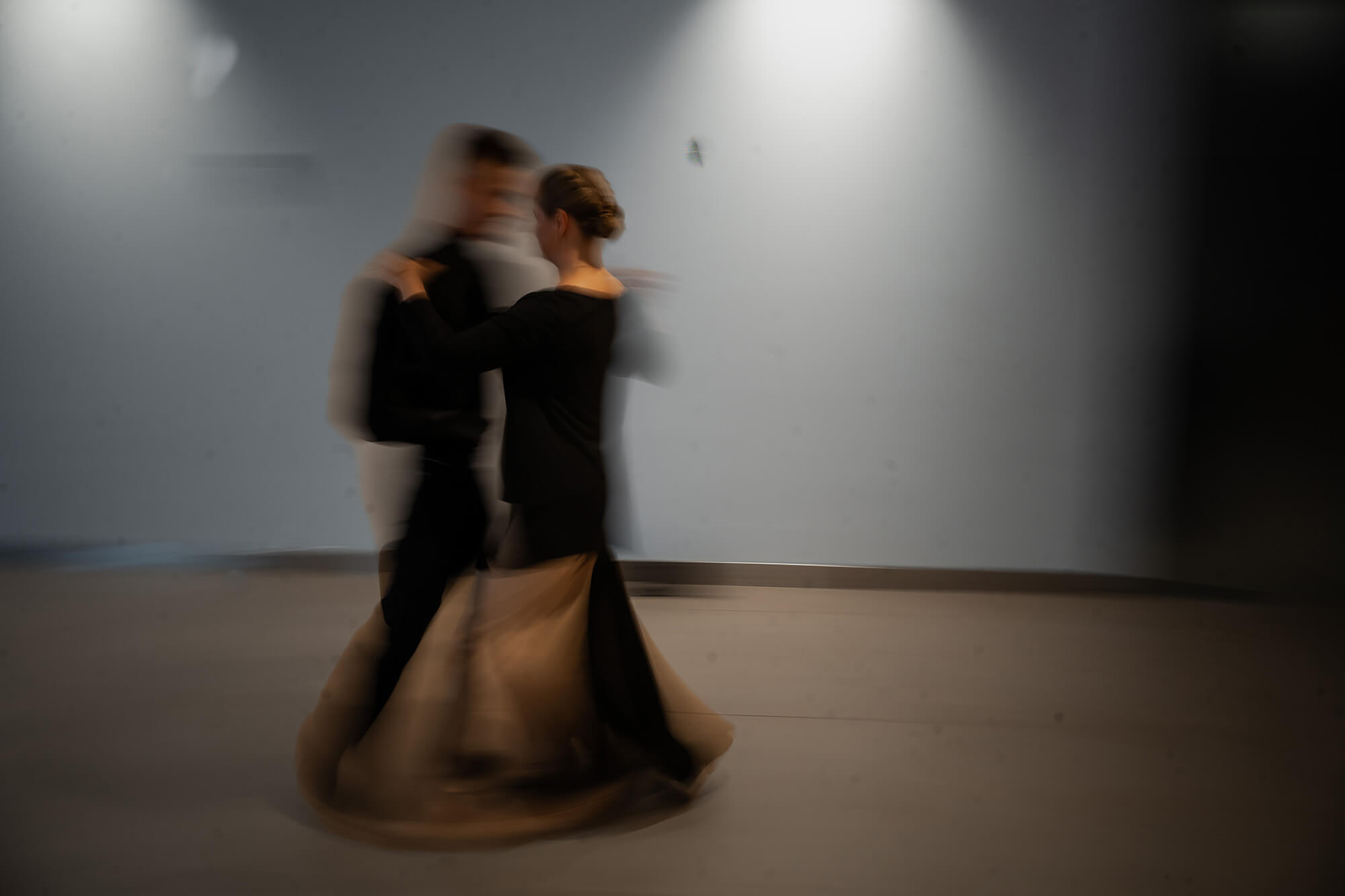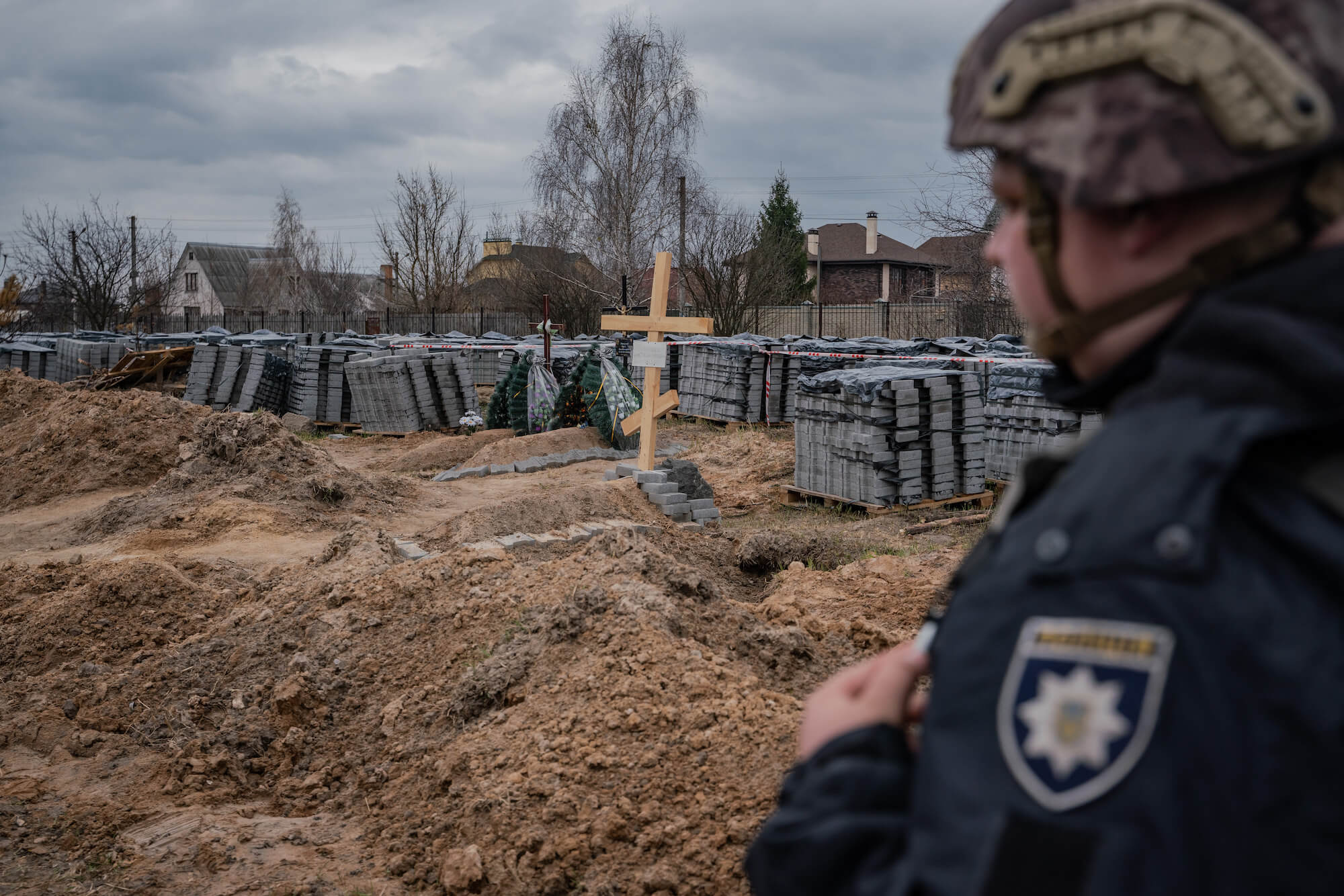
Pits
Two friends, Viсtor and Pavlo, lived on Myr (Peace) Street in the village of Zdvyzhivka, Bucha district. They played together as children, went to kindergarten together, served in the Anti-Terrorist Operation together, and after the start of the full-scale Russian war against Ukraine, they were both found in a pit outside their village. They had been tortured and killed. They had spent their whole lives together, but now they lay in the ground in different cemeteries.
The story of Victor and Pavlo is one of a few thousand stories of people who were tortured, shot and buried in hastily dug graves during the Russian occupation. There are several such graves in villages and towns across the Kyiv region. They are large, mass graves, piled up with the bodies of people who were simply walking down the street or escaping their town when they were shot in their cars. There are smaller ones that were dug in the gardens of people who before the war would have walked past the pear and apple trees hundreds of times, but never in a million years would have thought they would ever have to bury their relatives there.
Makariv
Oleksandr Serhiiovych is the Chief of Police of Makariv. In his office, he arranges for me and a few journalists to go with a police patrol to collect bodies in the area. To the sound of the relentless pattering of the rain outside, we sit and wait for a long time. Finally, another policeman enters the office.
“This is Yurii Nechai,” says Oleksandr Serhiiovych. “You will go with him.”
We all follow Yurii.
“See that grey van there? Follow it,” the policeman says curtly.
In the grey van, there are several men in green camouflage with machine guns and numerous large black body bags. The van pulls away. We stop as soon as we leave the town. This is a typical strip of woods with pines and poplars. There is a body under one of the trees. Charred so that the face is unrecognizable. The person seems to be frozen, as in the pictures of Pompeii’s last moments.
We are told to stay back and not to stray from the road as mines can be everywhere.
“Are his hands tied?” I ask Yurii.
“I can’t see from here,” he replies.
The men in camouflage put a black bag on the ground and place the body inside, lift it up and carry it to the van. We continue on.
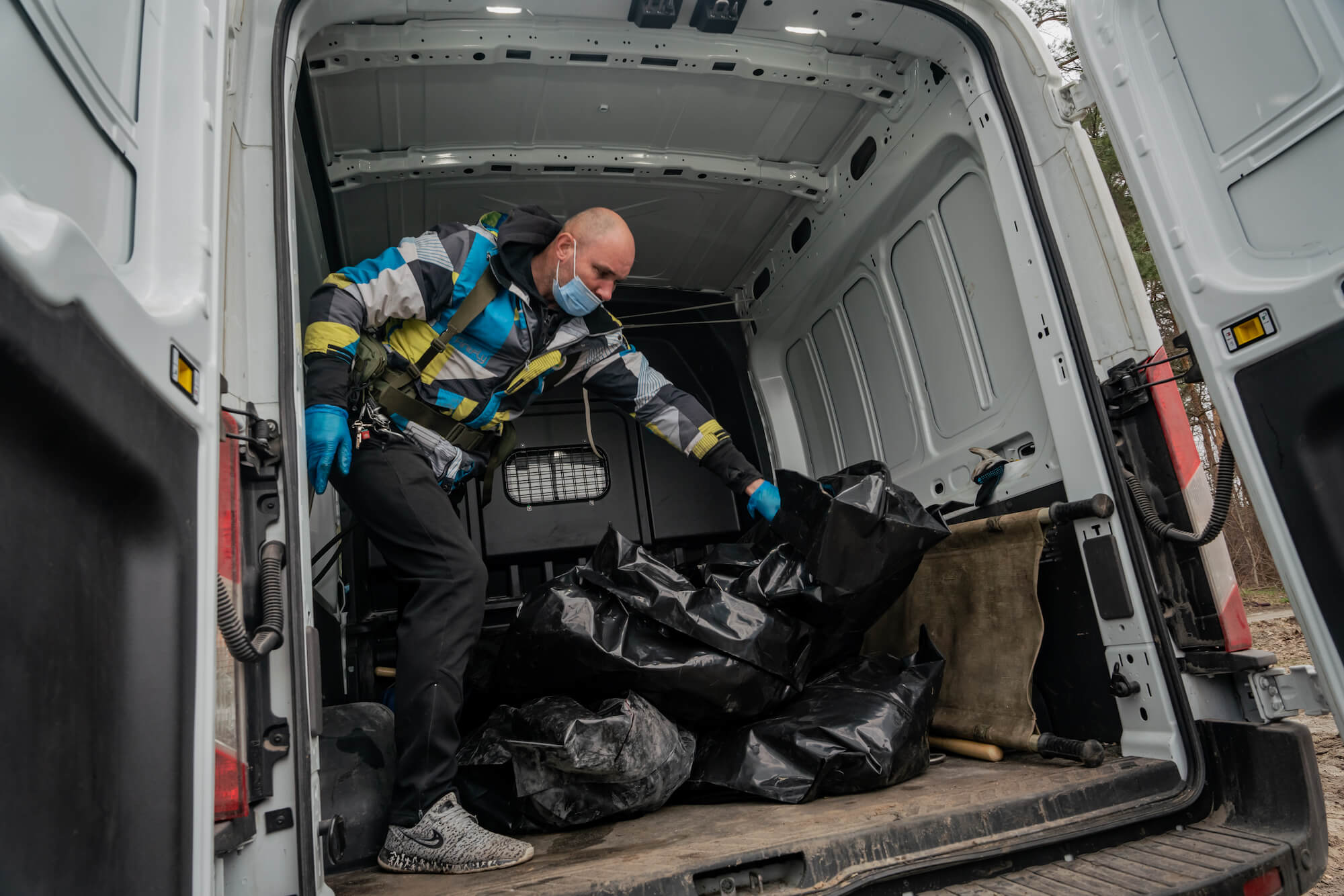
According to Mayor Vadym Tokar, in the Makariv district a total of 16 villages and part of Makariv itself were occupied. The Russian army approached the town on 28 February, four days after the start of the full-scale Russian war against Ukraine. For almost a week, the town was encircled. There were no humanitarian corridors for the safe evacuation of the locals, and civilians trying to flee by car were shot at. Locals found a car with an eight-year-old child, her mother and her grandfather. Her mother and grandfather had been shot dead, and the child was hiding under their bodies. Alive.
The van then stopped in the village of Vyshehrad. It is almost empty; there is hardly anyone outside. Two men were buried in the village in two backyards. They were neighbors.
The first yard. A high green gate. There was a fresh grave in the garden, but now there is only a pit. The body of a man, Yurii Makeiev, 62, is being pulled out of it. His son is watching the exhumation process.
“We called him in early March,” he says. “But we didn’t even know if it was him answering the phone. We heard a few unintelligible words. He was shot in the head.”
Once the first body is taken out of the yard, the men in camouflage proceed to the next house. The buried man here was also shot in the head. He was a surgeon. The neighbors say his wife was shot in the chest and then taken to a hospital in Belarus. They never saw her in the village again.
The bodies are loaded into the van cabin, and I can smell them. A sweet and sour smell. Very faint, but I want to hide from it.
Yurii says that he and his men will return to Makariv. Their team only takes the bodies; other people find them. To take the dead to the morgue, they must collect at least 10 bodies. So they will stay here for now.
The grey van pulls away. The sweet and sour smell lingers inside the car I am in. Everyone who was taken in the van today was a civilian.
Andriivka
There is a huge pit dug in the middle of Maria Stepanivna’s orchard. It is deep, with a thick layer of clay at the very bottom, and surrounded by plum, pear and cherry trees. The pit is full of rubbish. I see some Russian MRE boxes. There are no bodies.
“Who would they bury here? They drove in a tractor and started digging. Look, they drove in over there,” Maria Stepanivna points to the left, where the tracks of big tires are visible.
The woman calms down her dog and says that she no longer wants to say anything to anyone. She has this pit in her yard now.
There are many destroyed houses in the village of Andriivka. On the intact gate of one of the locals, a sign reads ‘Humanitarian aid, Andriivka Village Council’. There are many dogs in the yard. People come here one by one, asking for pasta or eggs.
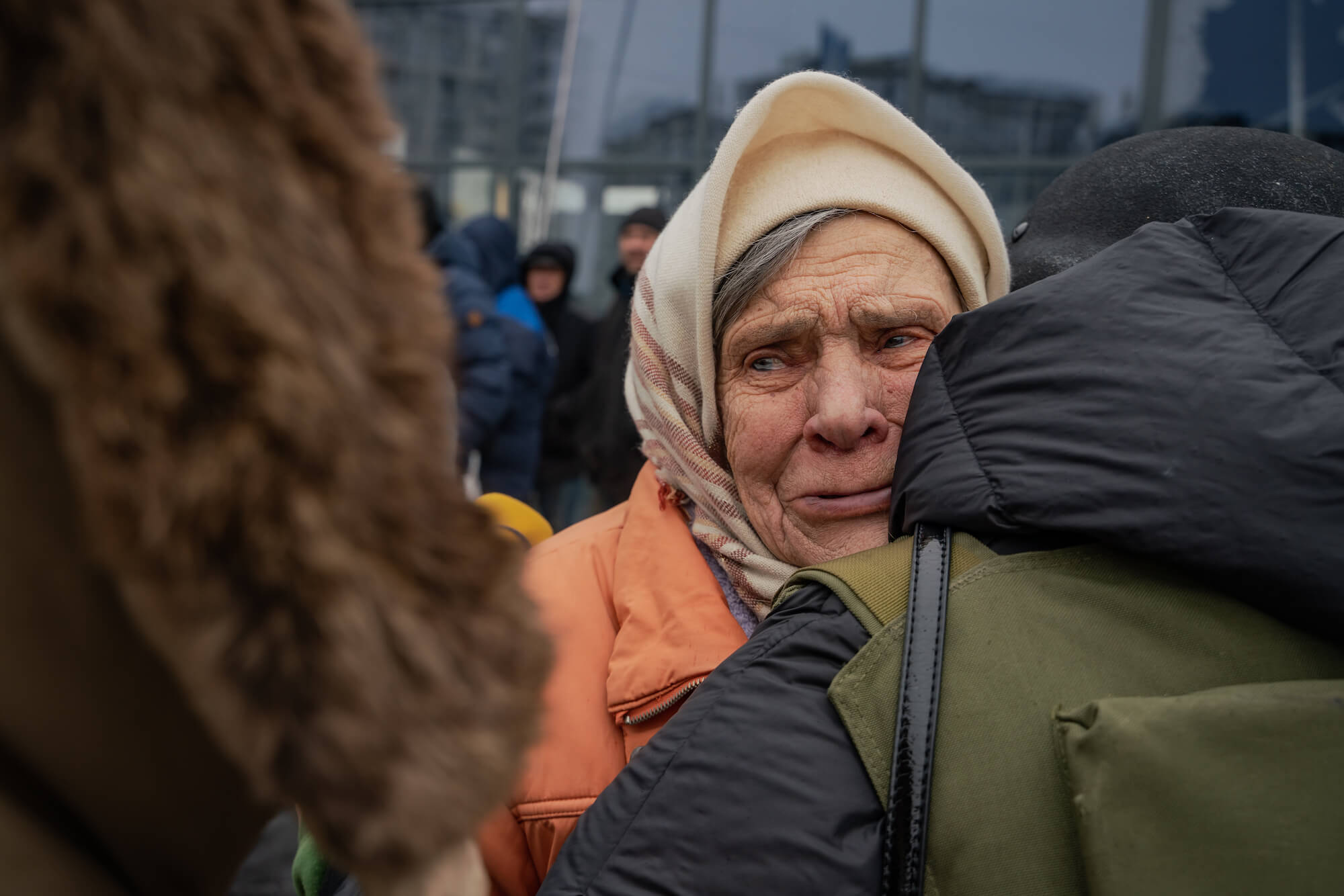
Anatolii Kybukevych, Head of the Village Council, approaches the gate. He is a man with thick grey stubble in a military uniform.
“Let me show you where they buried my brother,” he says, and we walk across the village to his house.
After a while, we stop. But not by the house where his brother was killed. Anatolii has spotted his acquaintances who had returned to their house. They invite us into the yard. The house is beautiful and neat.
“They lived here,” says the owner of the house. “Open this door, prisoners were kept here.” There are several mattresses and cushions outside the door of the room the man points to. It’s starting to rain outside, and we get back into our cars.
We get to the house of Anatolii Kybukevych, where we meet a neighbor who found his brother’s body.
“I entered the yard and shouted, but no one answered,” says the man. “Then I went to the barn and saw Vitalik on his knees, his head tilted to the side. I reached out to him, but he was dead.
Anatolii’s brother was shot with his hands tied behind his back. The body was buried in the garden two days after he had been found. His grave is in the middle of a wide stretch of vegetable garden, with only black earth and green shoots of grass. It has been covered with some tiles from his roof.
“Our neighbor, Vadym, was also shot. They also shot him in the head,” says Anatolii Kybukevych.
He does not know why his brother and neighbor were killed. He only says that they found their phones connected to the chargers. Maybe the Russians found something in their phones.
Borodianka
On our way from Andriivka, we enter Borodianka. The rubble of destroyed building is being cleared there. They are called ‘points’: 1, 2, 3, 4. One destroyed building is now referred to ‘point 1.’ A Russian plane dropped several bombs on the town, all of which hit residential buildings. None of them were military facilities.
Rescuers clear the debris. Some people are helping with the excavator operator; two men are raking up dirt and dust with their bare hands. There is a large pit next to the intact part of the building. You can see some ledges at the bottom; they say that it is the entrance to the basement.
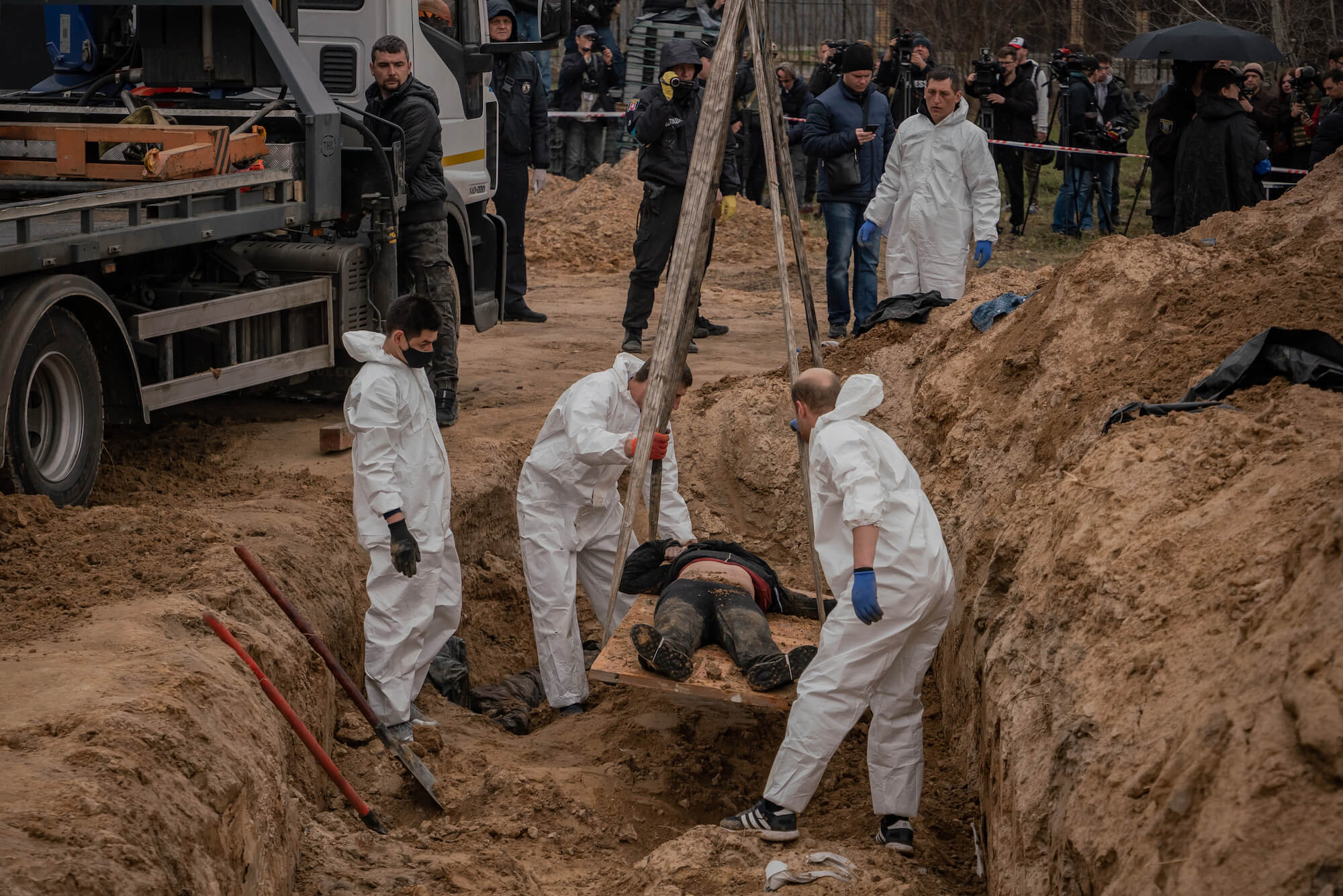
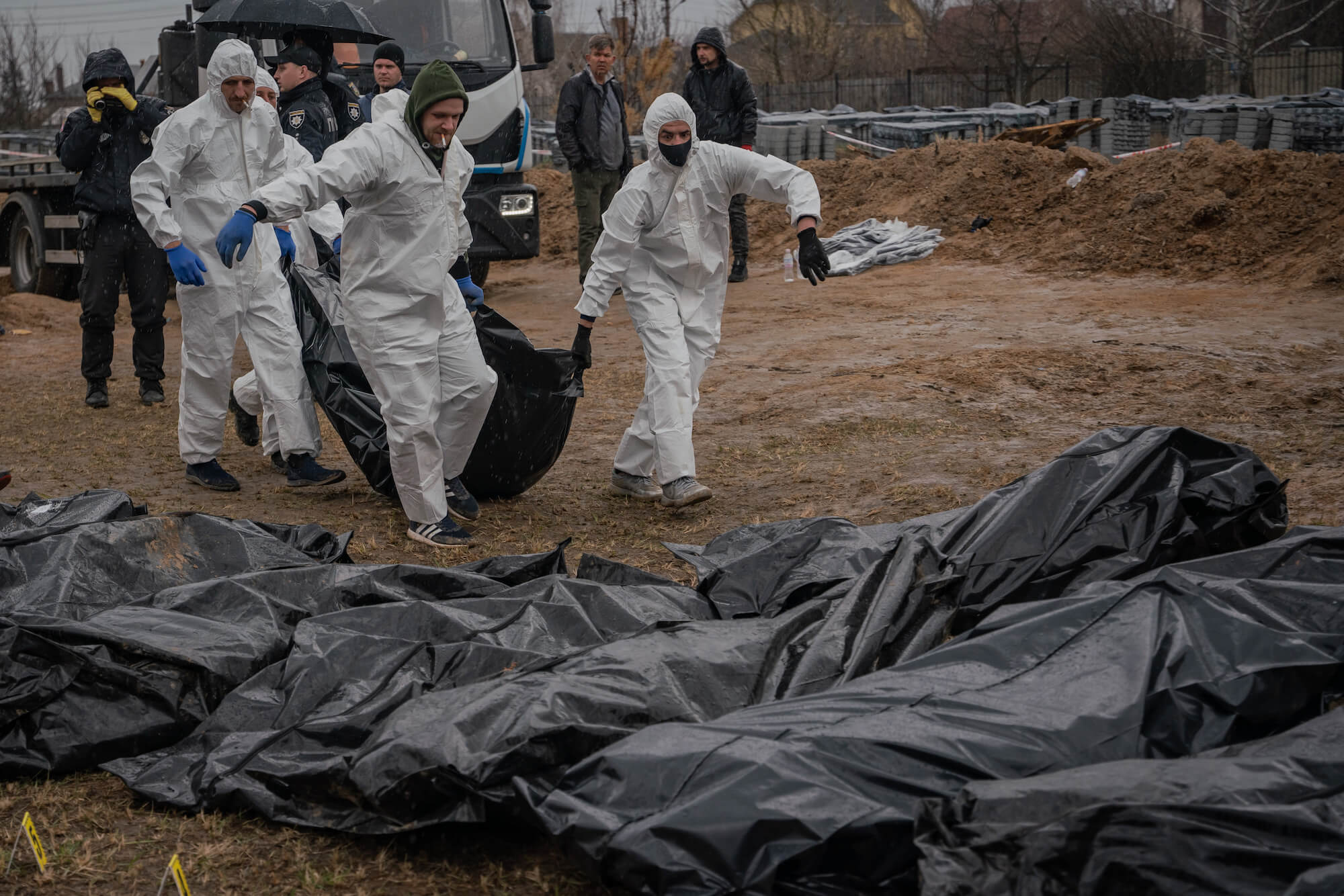
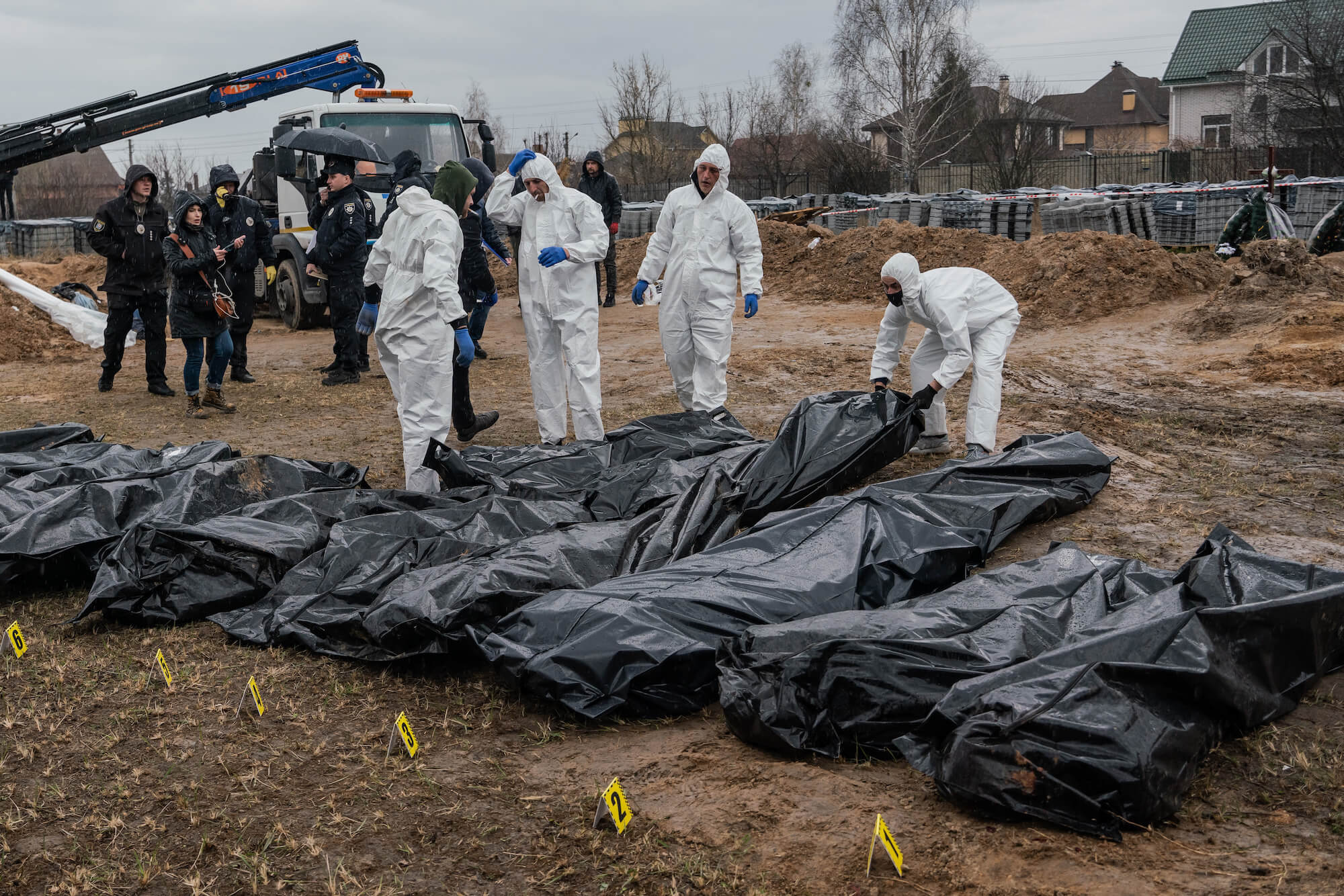
Hanna is standing next to the rescuers as they clear the piles of rubble. She has a bright pink jacket on, and stands out from other rescue workers. Hanna is looking for her mother, aunt and nephew. She hasn’t been able to contact them since early March.
“I’m waiting for them. It’s the hardest at night, because my mum and I usually called each other at that time. Look,” says Hanna, pointing at a small wound on her nose. “That’s from crying; my tears did that.”
Hanna steps onto a concrete block and watches the scoop lifting the debris. She explains where the entrance used to be. Hanna and the rescuers are surrounded by three buildings whose windows were shattered by a shock wave. Those who managed to escape are now returning to their apartments to collect whatever is left intact. I come across someone’s school certificate on the ground. Their biology and geography grades were good. There is a photo album a little farther away, like the ones they do for the final school year, with teachers and classmates.
I move on, to Kyiv. Hanna is left to watch as the rescuers search for bodies under the rubble. She hopes her family were forcefully deported. She is waiting for them.
Bucha
In one of the windows of a multi-story building in Bucha, a curtain is peeping out through the broken window. A long green piece of fabric is swinging freely in the wind. The building is empty. There is a church a few dozen meters away: with high white walls and a golden dome, it stands surrounded by small neat houses. There are grey concrete slabs in the backyard, and a large pit in between containing the bodies of locals. A large mass grave.
I approach the pit and see the bodies. I can see someone’s foot. It has a man’s shoe on. I am trying to find the other leg: it’s nearby, but with a different shoe on. It is also black, but different. Are these the bodies of two different men or just one? The faces of the bodies are not visible, covered by clay. The clay is damp and my shoes sink in. Big black bags stacked next to this man’s feet also contain bodies. The bags are stacked one on top of the other. Next to them I notice a woman’s palm sticking out of the ground.
I try to count everyone I can see in the pit but lose count. Perhaps 15 or 16 bodies. I start over. 15 or 16? Do the shoes I saw count as one body or two? Somewhere in the middle of the grave, a golden jacket is buried in clay. Whose is it? It looks like a women’s jacket. Yet I can’t see any body. It could be just a jacket. But nothing is just buried in this pit.
There are three graves by the side of the large pit with bodies. There is a cross on each of them, a wooden one on two of them and iron on the other. ‘Anastasia Pavlivna Pavlenko, 12/02/1939-06/03/2022’ reads an inscription on one of the plaques, fastened with nails to the wooden block of the cross supported by a pile of stones. Behind this grave, there are two others. Sweets and wreaths of artificial flowers have been placed on them.
Serhii Kaplychnyi, head of the funeral home in Bucha, is trying to find out the names of the bodies found in the town.
“80 bodies have been found so far. The bodies are first handled by deminers, and then by the police. Then it is our turn; there are three groups of us. People were killed. All these people who were shot were civilians,” says Kaplychnyi.
We meet him at the local cemetery. There are several rows of black bags containing bodies. They were placed on the ground right in front of the graves of those buried earlier in Bucha, before the invasion. Photos of the dead on granite tombstones look directly at the bodies of the murdered. I am trying to count the people in the bags again. And again, I am losing count.
“Avramov or Abramov?” Serhii Kaplychnyi talks on the phone to the relatives of those whose bodies he recognized. He is constantly on the phone. At the cemetery, he is accompanied by several police officers who describe the appearance of those killed and keep a record of where people were wounded. The bodies are then sent to a morgue, where experts identify the cause of death. But not all morgues can accept such a large number of bodies.
The man says he lived under occupation for two weeks. There was no electricity or gas in the town during occupation. He left during the evacuation on 14 March. Kaplychnyi recalls that, by that time, the town was full of the wounded and dead lying on the streets. So he asked the Russian soldiers who were occupying the town to allow these bodies to be buried, but they refused. Only those lying in the morgue were allowed to be buried.
“They said to leave the bodies on the streets where they fell. Anyway it was cold, they explained. This is a disaster. What have they done? Why did they do it? These were ordinary people. Just civilians. The Russians are not fighting our soldiers. They are shooting ordinary people.”
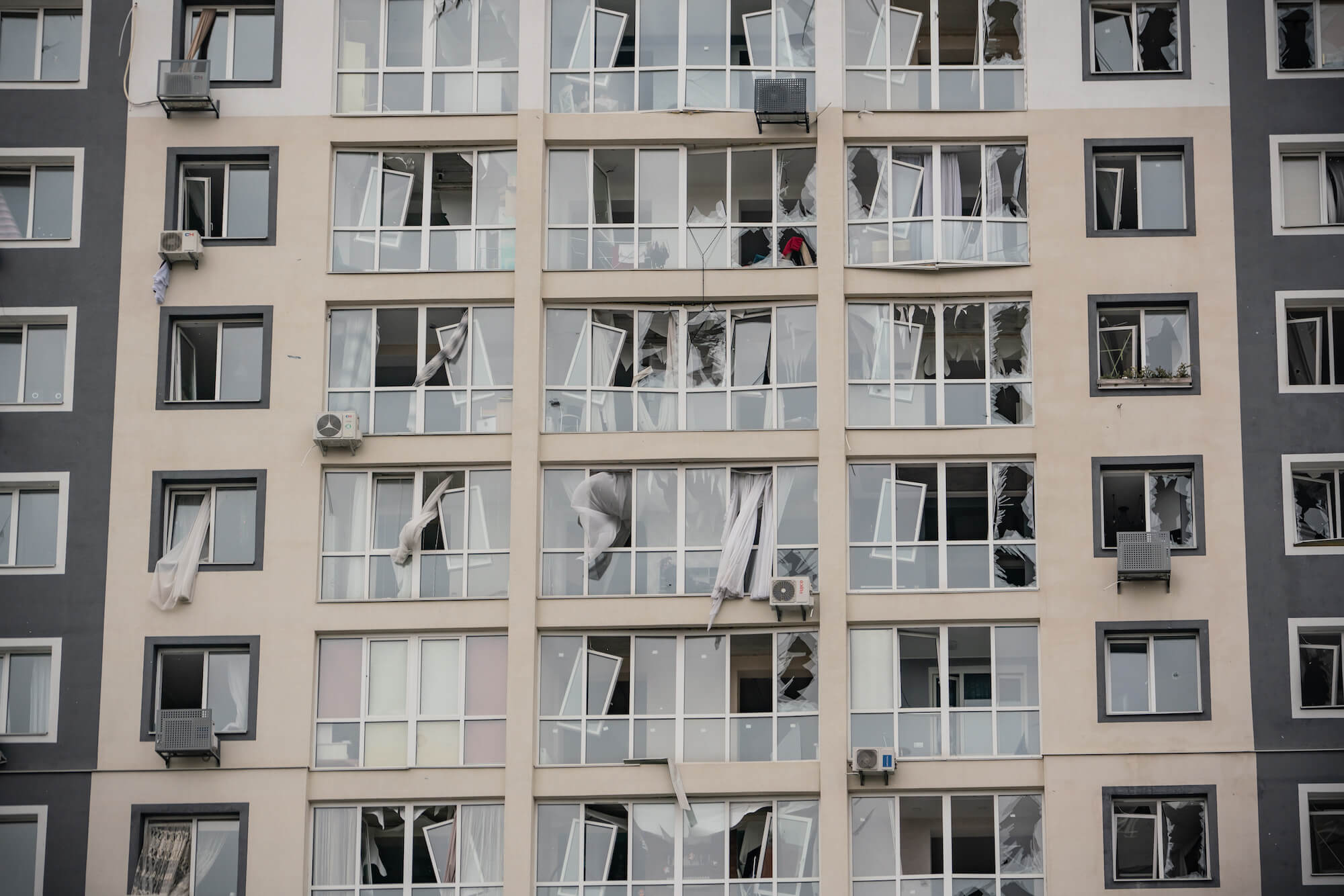
Have read to the end! What's next?
Next is a small request.
Building media in Ukraine is not an easy task. It requires special experience, knowledge and special resources. Literary reportage is also one of the most expensive genres of journalism. That's why we need your support.
We have no investors or "friendly politicians" - we’ve always been independent. The only dependence we would like to have is dependence on educated and caring readers. We invite you to support us on Patreon, so we could create more valuable things with your help.
Reports130
More